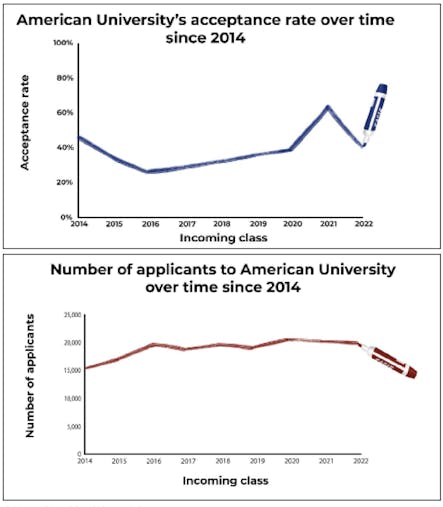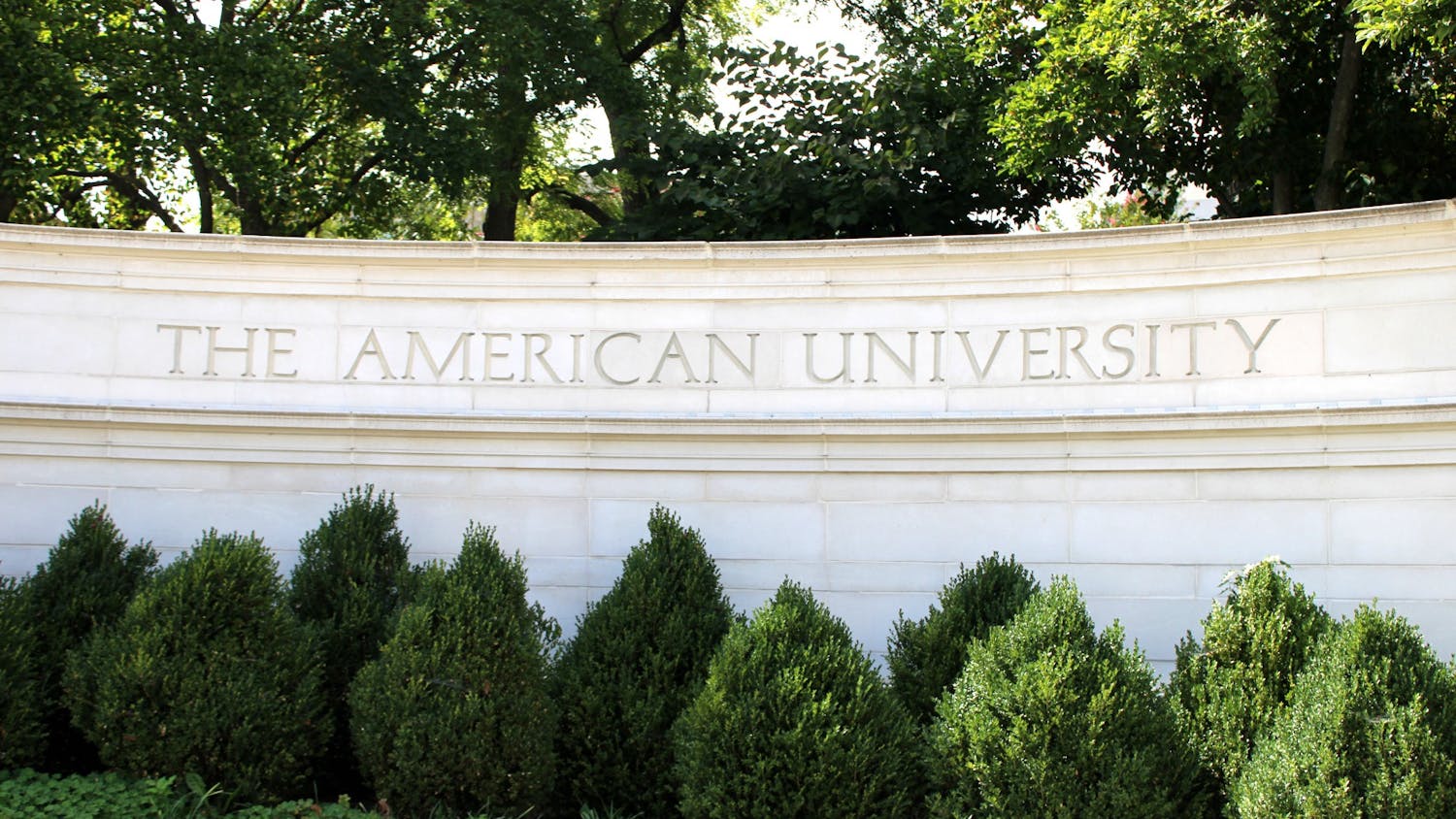From the Newsstands: This story appeared in The Eagle's April 2023 print edition. You can find the digital version here.
Google “American University” and the results might look a little different compared to previous years. After averaging a 32 percent acceptance rate for the last five years, AU’s acceptance rate doubled to 64 percent for the Class of 2025.
AU’s acceptance rate ranged from 26 percent to 39 percent in the past five years, according to data from the University’s Academic Data Reference Books. The acceptance rate varies based on the number of applicants and the changing enrollment targets set by the administration, according to Andrea Felder, the interim vice president of undergraduate enrollment.
AU’s acceptance rate over the years
It’s natural for acceptance rates to vary from year to year, according to Jasmine Pelaez, the internal communications manager for the University. AU’s number of applicants increased before steadying for the past several years while the admit rate fluctuated, according to data in AU’s Academic Data Reference Books and the National Center for Educational Statistics.
Most notably, the acceptance rate jumped to 64 percent for the incoming class in 2021 from 39 percent the year before.
The Class of 2025 and its acceptance rate
AU doesn’t aim for a specific admit rate each year, University officials said. Rather, it creates enrollment targets — the number of students it aims to enroll, according to Felder. These targets vary each year.
The University enrolled a smaller number of students in fall 2020 for the Class of 2024 because of the coronavirus pandemic and made a “strategic decision to enroll a larger class in 2021, of which we had a strong pool of applicants,” according to a statement given to The Eagle by the Office of University Communications and Marketing.
Compared to prior years, AU received a similar number of applicants for fall 2021 but accepted a larger number of those applications. This meant the percentage of students accepted increased significantly, leading to an acceptance rate of 64 percent.
Though the University intentionally admitted a larger class, more students enrolled than the University should have allowed under its 2021 Campus Plan, a 10-year agreement with D.C.
The plan states that AU must provide housing for 67 percent of full-time undergraduate students. Based on AU’s housing capacity, this limits the number of full-time undergraduates the University can enroll.
In fall 2021 and fall 2022, AU enrolled more students than the plan allows. The University had to notify Advisory Neighborhood Commissions 3D and 3E and work to “mitigate any impact” of a higher enrollment and “implement policies” that ensure that AU can reach compliance again in the coming semesters, according to Elizabeth Deal, the assistant vice president for community & internal communication.
“The goal is to create a cooperative environment that supports the quality of life for both our neighbors and our students,” Deal said.

Looking deeper at enrollment targets
Several offices — including the Office of Enrollment, the Office of Institutional Research, the Budget Office, the Study Abroad Office and Chief Financial Officer — work together to establish enrollment targets at the beginning of each two-year budget cycle, according to Felder. Matthew Bennett, the vice president and chief communications officer at AU, noted that these can be adjusted between budget cycles to account for annual changes.
When calculating the size of an incoming class, the University must consider the number of returning students, the number of students studying abroad and the number of students graduating early, among other factors, said Bennett.
Once the University has an idea of how many students it can enroll, it selects students who are a good fit for AU, said Felder. She added that the admissions office relies on historical data models to understand how many students are needed to reach the enrollment target.
The number of applicants compared to the number of spots open for an incoming class determines the acceptance rate.
Shaping the incoming class
Felder said that the University is always looking to increase its reach nationally and globally when recruiting new students.
“We're always aiming to try to cast a wide net of students in terms of the number of applications we receive,” Felder said. “That's helpful because it does allow for additional diversity within the class and thinking about big umbrella diversity. So race, ethnicity, geography, socioeconomic diversity, international and global diversity as well, different majors.”
AU uses a holistic approach to admissions, meaning that students are evaluated based on their overall application rather than individual pieces like test scores.
The University looks at students’ grade trends throughout high school, community engagement, essays, teacher recommendations and demonstrated interest. AU “first and foremost” values students’ academics and grade trends throughout high school, Felder said.
“[We’re] looking for bits and pieces of the application that will tell us that the student will come to the University, be successful in their classes, that they'll thrive in the campus community, that they'll get involved in and want to engage with other students and their peers as well,” said Felder.
Felder said she doesn’t believe the acceptance rate will impact prospective students’ views of the school.
“We don't typically, when we're recruiting, lead with admit rates at all with students and families,” said Felder. “We lead more so with the AU story, telling stories about students and their experiences and how students can come to our campus and thrive in the community. So it does not impact us in our work.”





